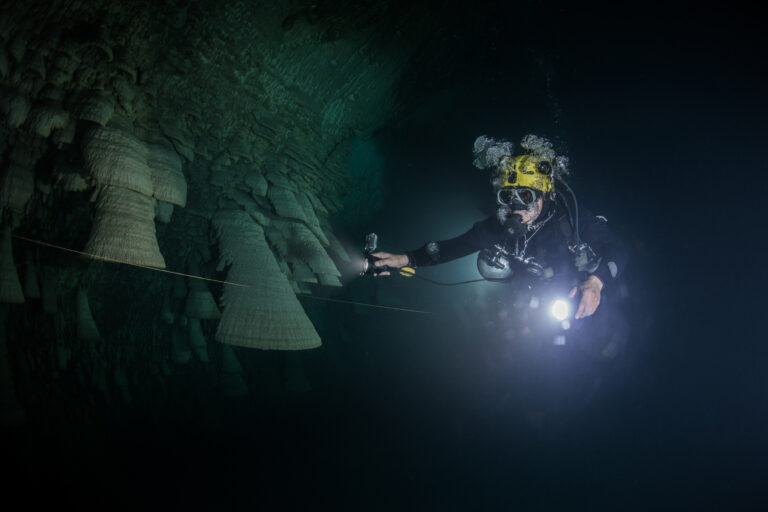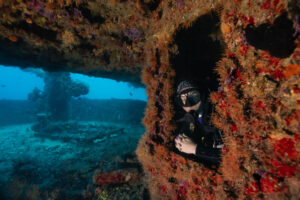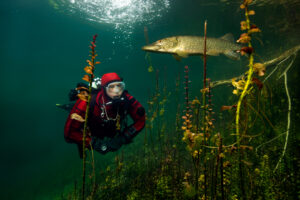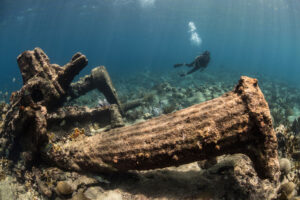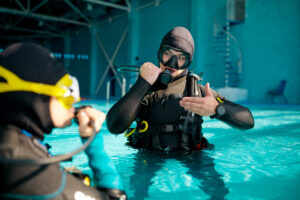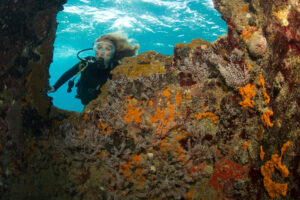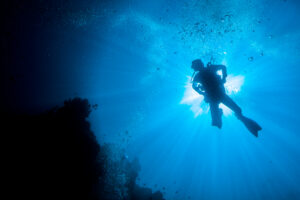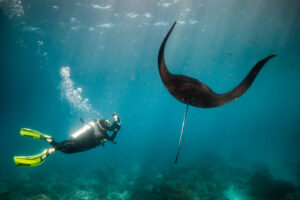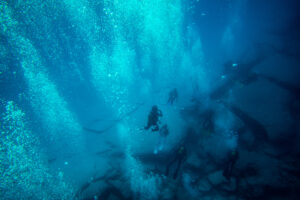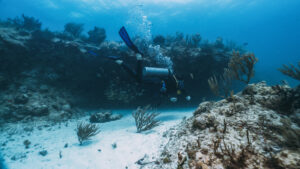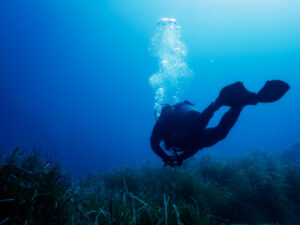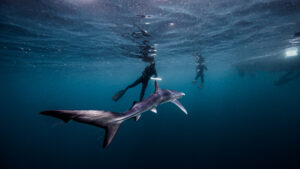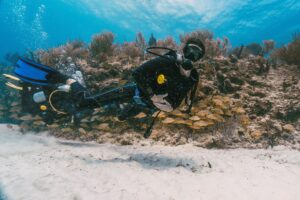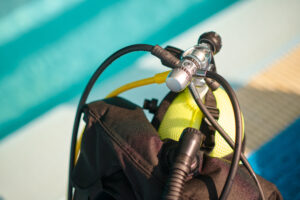Scuba Divers’ Travel Guide to Cocos Islands
The Cocos (Keeling) Islands, located in the Indian Ocean, offer scuba divers a chance to explore some of the most pristine and untouched marine environments in the world. The clear, warm waters are home to vibrant coral reefs, abundant marine life, and a variety of fish species. The islands’ remote location ensures that the dive sites remain relatively undiscovered, providing a sense of adventure and exploration. The underwater landscapes, characterized by coral gardens and sandy bottoms, offer a diverse range of diving experiences. For scuba enthusiasts, the Cocos Islands are a hidden gem waiting to be explored.
Location and Geography
Nestled in the heart of the Pacific Ocean, approximately 550 kilometers off the coast of Costa Rica, the Cocos Islands (Isla del Coco) present a remote and exhilarating scuba diving paradise. This UNESCO World Heritage site, often referred to as the “Island of the Sharks,” is an uninhabited island except for a national park station. Its isolation has preserved its pristine condition, offering an unparalleled underwater experience. The island’s rugged geography, characterized by steep cliffs, waterfalls, and lush rainforests, extends beneath the waves to reveal a dramatic seascape of deep drop-offs, vibrant coral reefs, and bustling marine life. The convergence of nutrient-rich currents here supports an extraordinary biodiversity, including large pelagic species, making it a premier destination for adventurous divers seeking to explore the untouched beauty of the underwater world.
Visa and Entry Requirements
Traveling to the remote and enchanting Cocos Islands, a premier destination for scuba divers seeking unparalleled underwater adventures, requires careful planning, especially regarding visa and entry requirements. As an Australian external territory, visitors to the Cocos Islands must adhere to Australian visa policies. Most international travelers will need to obtain a visa or an Electronic Travel Authority (ETA) before arrival, which can be applied for online or through Australian diplomatic missions. It’s essential to check the latest visa requirements based on your nationality and ensure your passport has at least six months of validity from your planned date of return. Additionally, given the islands’ unique ecological status, visitors may be subject to specific biosecurity measures to protect the local environment. Always verify the most current entry requirements and any COVID-19 related protocols before planning your scuba diving trip to this exquisite destination.
Getting to Cocos Islands
Getting to the Cocos Islands, a remote paradise located in the Pacific Ocean and part of Costa Rica, is an adventure in itself, primarily appealing to the dedicated scuba diver seeking unparalleled underwater experiences. The journey typically begins with a flight to Juan Santamaría International Airport in San José, Costa Rica’s bustling capital. From there, travelers must catch a domestic flight to the coastal town of Puntarenas, a scenic journey that offers a glimpse of Costa Rica’s diverse landscapes. The final leg of the trip to the Cocos Islands is by sea; a liveaboard boat takes divers on a roughly 36-hour voyage across the Pacific. This journey is not only a passage but a transition into the remote, pristine environment that makes Cocos Island a legendary diving destination. The anticipation builds with every mile, promising encounters with hammerhead sharks, manta rays, and untouched coral reefs that await in the island’s surrounding waters.
Best Time to Dive
Getting to the Cocos Islands, a remote paradise located in the Pacific Ocean and part of Costa Rica, is an adventure in itself, primarily appealing to the dedicated scuba diver seeking unparalleled underwater experiences. The journey typically begins with a flight to Juan Santamaría International Airport in San José, Costa Rica’s bustling capital. From there, travelers must catch a domestic flight to the coastal town of Puntarenas, a scenic journey that offers a glimpse of Costa Rica’s diverse landscapes. The final leg of the trip to the Cocos Islands is by sea; a liveaboard boat takes divers on a roughly 36-hour voyage across the Pacific. This journey is not only a passage but a transition into the remote, pristine environment that makes Cocos Island a legendary diving destination. The anticipation builds with every mile, promising encounters with hammerhead sharks, manta rays, and untouched coral reefs that await in the island’s surrounding waters.
Accommodation Options
Nestled in the heart of the Pacific Ocean, the Cocos Islands offer a unique and secluded getaway for scuba diving enthusiasts, with accommodation options that cater to a range of preferences and budgets. Given the islands’ remote location, visitors typically stay on liveaboard boats, which serve as a floating base, providing not only cozy cabins and communal areas but also direct access to the islands’ spectacular dive sites. These liveaboards range from luxurious vessels with spacious, well-appointed cabins and top-notch amenities to more budget-friendly options that offer a comfortable yet no-frills diving experience. For those who prefer to stay on land, there are a few eco-friendly lodges and guesthouses on the islands, offering a closer connection to the islands’ natural beauty and tranquility. These accommodations, while limited, emphasize sustainability and provide a serene retreat after a day of underwater exploration. Regardless of where you choose to stay, the Cocos Islands promise an unforgettable diving adventure, complemented by the warm hospitality and unique charm of your chosen accommodation.
Dive Operators and Dive Shops
In the remote splendor of the Pacific Ocean, the Cocos Islands emerge as a premier destination for scuba divers seeking unparalleled underwater adventures. Given the islands’ isolated location, approximately 550 km off the coast of Costa Rica, choosing the right dive operator or dive shop is crucial for an unforgettable experience. The dive operators servicing the Cocos Islands are renowned for their expertise, safety standards, and commitment to environmental conservation. These operators typically offer liveaboard experiences, as there are no dive shops directly on the islands due to their status as a protected national park. Liveaboards not only provide divers with the convenience of having all necessary equipment and amenities on board but also allow access to the most remote and pristine dive sites around the islands. These floating dive bases are well-equipped to cater to both novice and experienced divers, offering guided dives through the islands’ dramatic underwater landscapes, teeming with hammerhead sharks, manta rays, and vibrant schools of fish. When selecting a dive operator for your Cocos Island adventure, look for those with a strong track record of environmental stewardship and positive customer reviews to ensure a safe, enjoyable, and eco-conscious diving experience.
Transportation within Cocos Islands
Transportation within the remote Cocos (Keeling) Islands, a scuba diver’s paradise located in the Indian Ocean, is an adventure in itself, reflecting the islands’ unique charm and laid-back lifestyle. Given the compact nature of the two main islands, West Island and Home Island, where most accommodations and amenities are found, getting around is relatively straightforward. On West Island, where the airport is located, car and scooter rentals are available and offer a convenient way to explore at your own pace. Bicycles are also a popular option, providing a leisurely and eco-friendly way to enjoy the stunning scenery. For inter-island travel, especially to reach the dive sites or to explore the uninhabited islands, boats are the primary mode of transportation. These can range from small dinghies to larger charter boats, all operated by locals who are experts in navigating the surrounding waters. While the options may seem limited, they perfectly complement the islands’ ethos of simplicity and environmental consciousness, ensuring that your journey is as memorable as the underwater wonders you’re there to explore.
Currency and Payment Methods
In the remote paradise of the Cocos Islands, a scuba diving gem nestled in the heart of the Indian Ocean, the official currency is the Australian Dollar (AUD), reflecting its status as an Australian external territory. Visitors should be mindful that, due to the islands’ secluded location, banking facilities are limited, and it’s advisable to carry sufficient cash for the duration of your stay. While some businesses, including dive operators and accommodations, may accept major credit cards, reliance on electronic payments can be risky due to intermittent internet connectivity. Therefore, ensuring you have enough cash for your expenses, including those unexpected underwater camera rentals or souvenirs, is crucial. Additionally, it’s worth noting that there are no ATMs on the islands, so withdrawing cash upon arrival is not an option, emphasizing the importance of planning your currency needs in advance of your scuba diving adventure in this exquisite, off-the-beaten-path destination.
Language and Communication
In the remote and pristine waters of the Cocos Islands, a UNESCO World Heritage site nestled in the heart of the Pacific Ocean, communication transcends the barriers of language, uniting divers in their shared passion for the underwater world. While English is widely spoken among the diving community and crew members on liveaboards and dive operations, the universal language of diving signals becomes paramount beneath the waves. This ensures seamless interaction with your dive buddies and guides, regardless of nationality. However, embracing a few basic phrases in Spanish, the official language of Costa Rica, which has sovereignty over the islands, can enrich your experience, fostering a deeper connection with the local crew and enhancing your cultural understanding of this spectacular diving destination. Whether you’re marveling at the schools of hammerhead sharks, navigating through vibrant coral reefs, or simply enjoying the serene beauty of the islands, effective communication, both above and below the surface, is key to a memorable and safe diving adventure in the Cocos Islands.
Local Culture and Attractions
Nestled in the heart of the Pacific Ocean, the Cocos Islands, also known as Isla del Coco, offer more than just breathtaking underwater adventures; they are a treasure trove of rich history and vibrant local culture. This remote Costa Rican outpost, declared a UNESCO World Heritage Site, is steeped in tales of pirates and hidden treasures, captivating the imagination of visitors. On land, the lush, untouched rainforests are home to a plethora of unique wildlife, including several endemic species, making it a paradise for nature enthusiasts. While the islands themselves are uninhabited, preserving their pristine condition, the culture of the Cocos Islands is deeply influenced by the conservation efforts and the stories of adventurers and scientists who have explored its depths. The local attractions, primarily focused on eco-tourism and conservation, offer visitors a unique opportunity to connect with the natural world, from guided hikes through the dense jungle to educational tours about the island’s biodiversity and conservation efforts. The Cocos Islands present a unique blend of natural beauty, intriguing history, and a commitment to preserving one of the planet’s most extraordinary ecosystems.
Cultural Etiquette and Tips
When planning a scuba diving trip to the Cocos Islands, a remote paradise in the Indian Ocean, it’s essential to approach the experience with a deep respect for both the natural environment and the local customs. The Cocos (Keeling) Islands, with their small, close-knit community predominantly of Malay descent, have a unique cultural tapestry that visitors are encouraged to honor. Politeness and modesty are highly valued, so when interacting with locals, a friendly demeanor and conservative dress, especially when outside of beach areas, are appreciated. Environmental conservation is paramount in this pristine ecosystem; divers should be mindful to avoid touching or standing on the coral reefs, and always follow the ‘leave no trace’ principle, ensuring that the underwater beauty of the Cocos Islands remains intact for future generations. Engaging with local guides and dive operators not only enriches your experience but also supports the local economy, fostering a mutually beneficial relationship between visitors and the island community. By adhering to these cultural etiquette and tips, divers will not only enjoy the breathtaking underwater world of the Cocos Islands but also contribute positively to the preservation of its unique heritage and natural splendor.
Local Laws and Regulations Relevant to Tourists
When planning a scuba diving trip to the Cocos Islands, a remote paradise in the Indian Ocean, it’s crucial to familiarize yourself with the local laws and regulations to ensure a safe and lawful adventure. The Cocos Islands, being a part of Australia, adhere to Australian laws, but also have specific regulations to protect their unique marine environment. All divers must obtain a permit from the Cocos (Keeling) Islands Visitor Centre before diving in the marine parks. It’s important to respect the no-take zones, where fishing or collecting anything is strictly prohibited to preserve marine biodiversity. Additionally, interacting with marine life, such as feeding or touching, is discouraged to avoid disrupting their natural behavior. Divers should also be aware of the strict guidelines regarding the use of underwater cameras and drones, as these are regulated to minimize stress on wildlife. By adhering to these regulations, divers can ensure their experiences contribute positively to the conservation efforts on the Cocos Islands, allowing this pristine environment to be enjoyed by future generations.
Safety Tips and Emergency Contacts
When planning a scuba diving adventure to the remote and enchanting Cocos Islands, prioritizing safety is paramount due to its isolated location in the Pacific Ocean. Before embarking on your underwater journey, ensure you are well-versed in dive safety protocols, including the use of dive computers and the buddy system. Given the islands’ distance from the mainland, it’s crucial to have a comprehensive dive insurance that covers emergency medical evacuation. Familiarize yourself with the local emergency procedures and ensure that the dive operator you choose has a direct line of communication with the Cocos Island National Park ranger station, which coordinates with the Costa Rican Coast Guard for any rescue operations. Always carry a surface marker buoy during dives to enhance your visibility from the surface. Remember, the key to a memorable diving experience at Cocos Islands lies in meticulous preparation and adherence to safety practices, ensuring you enjoy its underwater marvels with peace of mind.
Health and Travel Insurance
When planning your scuba diving adventure to the remote and enchanting Cocos Islands, nestled in the heart of the Pacific Ocean, it’s imperative to prioritize your health and secure comprehensive travel insurance. Given the islands’ secluded location, approximately 550 km off the coast of Costa Rica, access to medical facilities is limited, and the nearest decompression chamber is a considerable distance away on the mainland. Therefore, divers should ensure their insurance covers medical evacuation and hyperbaric treatment, in addition to standard travel insurance coverage for trip cancellations, lost gear, and unforeseen travel disruptions. The pristine waters and vibrant marine life of the Cocos Islands promise an unforgettable diving experience, but the peace of mind knowing you’re well-protected allows you to fully immerse in the beauty beneath the waves. Always verify that your policy specifically includes scuba diving activities, as some insurers require additional coverage for what they consider ‘high-risk’ activities.

